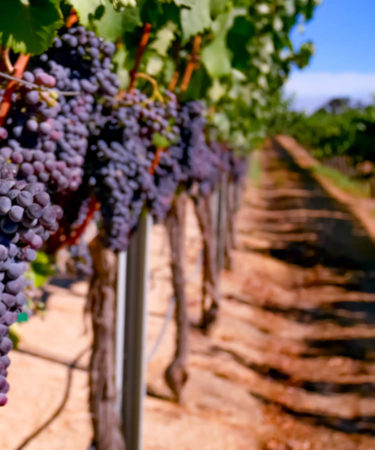There’s a lot of jargon associated with wine, particularly with winemaking. Do most wine drinkers really need to be able to tell if a wine undergoes a punch-down versus a pump-over?
For those who don’t plan to get a degree at UC Davis, most of these terms don’t matter very much. One to keep in mind, however, is carbonic maceration, a process used to make fresh, fruity wines.
Carbonic maceration is a way of fermenting red wine that differs from the standard, yeast-fueled fermentation. Unlike standard fermentation, in which yeast is manually or naturally added to grape must to convert sugar into alcohol, carbonic maceration does not use yeast to start fermentation. How is this possible? It’s a complicated matter, but by placing whole bunches of grapes in a sealed vat filled with carbon dioxide, the oxygen-starved fruit will release naturally present enzymes. These enzymes perform a similar function to yeast, breaking sugars down into alcohol. Essentially, during carbonic maceration, alcoholic fermentation begins inside the grape itself. Cool, right?
Most wine lovers explaining carbonic maceration stop there, but alcoholic fermentation doesn’t solely occur inside the fruit; it just kicks it off. Grapes won’t remain intact beyond 2 percent ABV; after this point, they split open to expose the juice and flesh. Typically, a winemaker will choose to press the grapes before this point, taking the fermenting juice out of its anaerobic environment and exposing it to oxygen. Yeast will then step in to finish the job, completing the fermentation of sugar into alcohol.
Those who aren’t science geeks may have tuned out at the mention of enzymes and carbon dioxide, but this process affects the style of red wine produced. Because most wines produced using carbonic maceration see very little grape skin contact, the most notable effects are lower tannins and lighter color. The process also affects acidity, since the grapes’ enzymes also break down sharp malic acid while they convert sugar into alcohol. Thus, many of these wines are lively, refreshing, and easy-drinking without being overly tart. Think of the wines of Beaujolais, the region that is most often associated with carbonic maceration, and particularly of the area’s nouveau-style reds.
Carbonic maceration also increases fresh, fruity aromatics and flavors in wine. Notes of banana and bubblegum are most associated with the technique, but Kate Norris, co-winemaker and co-owner of Division Wine Co. in Portland, Oregon, believes that these aromas are more connected to commercial yeasts and warm ferments often used when making nouveau-style wines. Division practices carbonic maceration at lower temperatures to bring out more berry notes in its carbonic-method wines.
It isn’t just Beaujolais that uses carbonic maceration. Prior to the late 1700s, it was the dominant winemaking method in Rioja, and it is still used at times to enhance fruity aromatics and add soft, smooth texture to the wine. More U.S. producers are creating nouveau-style wines using carbonic maceration, and some winemakers opt for the technique in hot regions with grapes that tend toward high alcohol, like Zinfandel. In Chile, native Burgundian Louis-Antoine Luyt makes some excellent País, Carignan, Cinsault, and even Carménère using carbonic maceration, most so lively and juicy that you’d never guess their high alcohol content.
For those who love gulpable, fresh, fruity reds, or even for white wine lovers trying to embrace reds, carbonic maceration is something to take note of. You’ll definitely cement your status as a bona fide winemaking pro.
